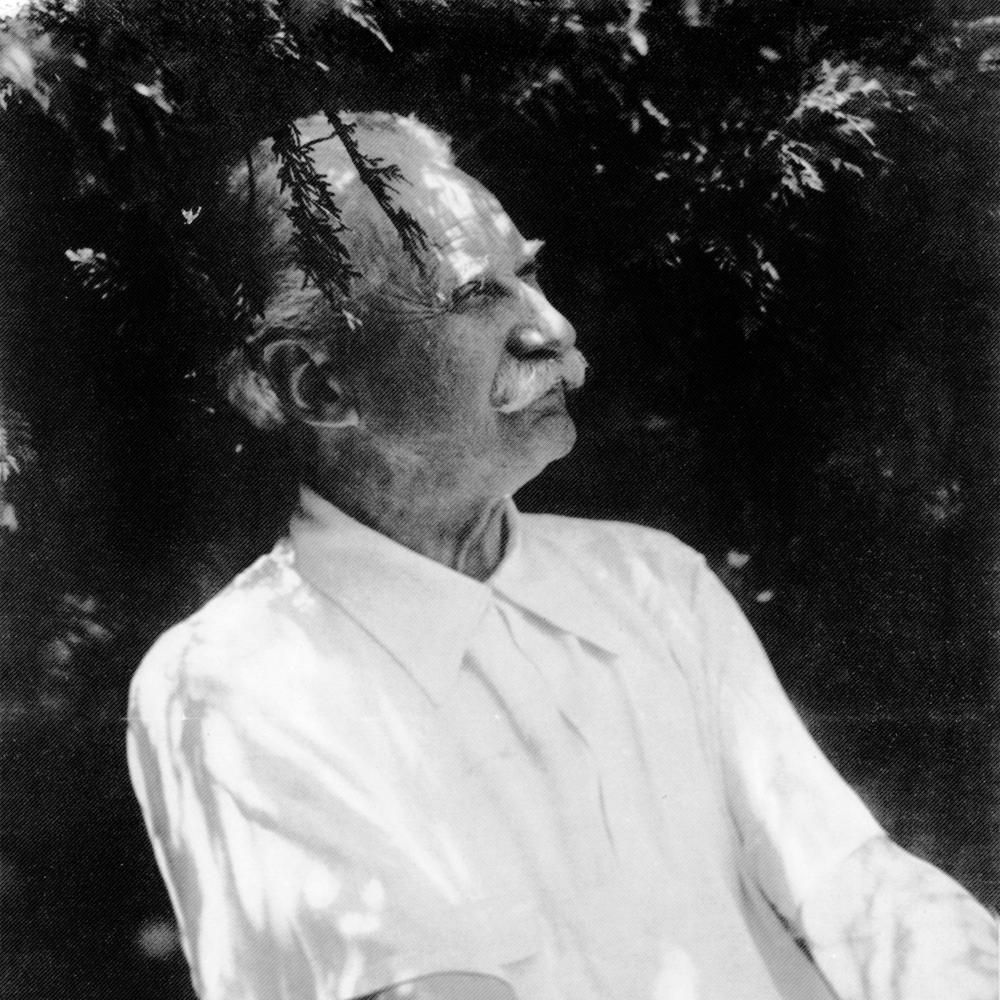Creative, temperamental, and notoriously exacting, Jens Jensen demanded perfection for any landscape he created. In the early 1900s, while working for Chicago’s West Parks District, he designed a prairie rapid and waterfall for the Garfield Park Conservatory. There, the workman charged with executing the design repeatedly failed, making what Jensen called “an abrupt mountain cascade.”
Frustrated, the workman said he could do no better. Jensen’s response was to send him home to listen to Mendelssohn. During the landscape architect’s next visit, “the water tinkled gently from ledge to ledge, as it should in a prairie country.” Addressing the workman, Jensen said, “You have heard the Spring Song.”
Although the art of landscaping at its best was symphonic for Jensen, and the prairie where “earth and sky meet on the far horizon” was his muse, a wide streak of practicality ran through the most prominent practitioner of the uniquely American art of prairie landscape architecture. Most famously, long before it became standard in gardening circles, Jensen recognized the merit of America’s native plants and used them in naturalistic settings in his public gardens and private commissions throughout the Midwest. This transformational design principle and Jensen’s conservation-based aesthetic are among the legacies highlighted in “Jens Jensen: Celebrating the Native Prairie,” a new exhibit funded by Humanities Iowa at the Danish Immigrant Museum in Elk Horn.
On display until March 2013, the museum’s exhibit coincides with the start of its construction for the Jens Jensen Prairie Landscape Park, which has been supported by fundraising and an Iowa Great Places grant. To develop the property’s thirty acres in Jensen’s vision, Tova Brandt, the exhibition curator, says the museum has called on a number of experts, including Robert Grese, Jensen’s biographer and director of the University of Michigan’s botanical gardens and arboretum, and William Tishler, an American Society of Landscape Architects fellow. Jens Jensen’s namesake and great-great-grandson, who practices ecological restoration out of Madison, Wisconsin, has developed the seed mixtures, planting guidelines, and elevations, and Country Landscaping, a company based in Ames with experience in prairie restoration, will do the excavation and seeding.
“The emphasis is on plants that thrive in this area, including some that [Jensen] talks about in his own writings, such as the wild plum,” says Brandt. “He wrote, ‘If I were taken to the state of Iowa blindfolded and there my blinds removed, I could tell where I was by the numerous native plums in hedge rows.’”
As the landscape matures, visitors will see stands of big bluestem, switchgrass, Canada wild rye, and other grasses, along with a host of wildflowers, including butterfly weed, coneflowers, and blazing stars—plants that once abounded on the vast sea of prairie that existed before westward expansion.
Even before Jensen emigrated from Denmark in 1884, much of the Midwest’s tallgrass prairie had been converted to rich farmland thanks to John Deere’s 1837 invention of the steel plow. In what remained, Jensen found inspiration. He wrote in his memoir, Siftings, “Perhaps no section of America has so far shown as much power in the development of native art as the prairie country.”
As a beginning designer, he turned a section of Chicago’s Union Park into the American Garden, replete with perennial wildflowers that had to be gathered from woodlands because nurseries did not then stock them. In Humboldt Park, he designed a natural-looking “prairie river” that called to mind the region’s slow-moving streams.
For Columbus Park, Jensen made a children’s pool that “mimicked a country swimming hole,” says Brandt. A social reformer at heart and friend of Jane Addams, Jensen thought that “to connect with nature was a vital part of being human and just because you lived in a city didn’t mean you should not still have the opportunity to connect with the natural world,” says Brandt.
Jensen went on to collaborate with numerous architects—among them Frank Lloyd Wright and Louis Sullivan—with whom he created a distinctive regional style, and he designed notable landscapes for the likes of Julius Rosenwald, the founder of Sears and Roebuck, and Henry Ford. At the Lincoln Memorial Garden in Springfield, Illinois, Jensen planted a grove of white oaks that he hoped would perpetuate and stand “thousands of years hence when every artificial monument erected in [Lincoln’s] honor has long gone to dust.”
On his forays out of Chicago, Jensen discovered places he fought to preserve. Among the loveliest are the sand dunes of Indiana. At seventy-five, he established a school called The Clearing in Ellison Bay, Wisconsin. It taught environmental stewardship and sought students Jensen thought would “study profoundly . . . do things worthwhile . . . not for oneself but others.”
In a career marked by vision and intellect, Jensen had a clear calling to do work that everyone could enjoy, says Brandt. His tenacity, well, that is “admirable from a distance.”


